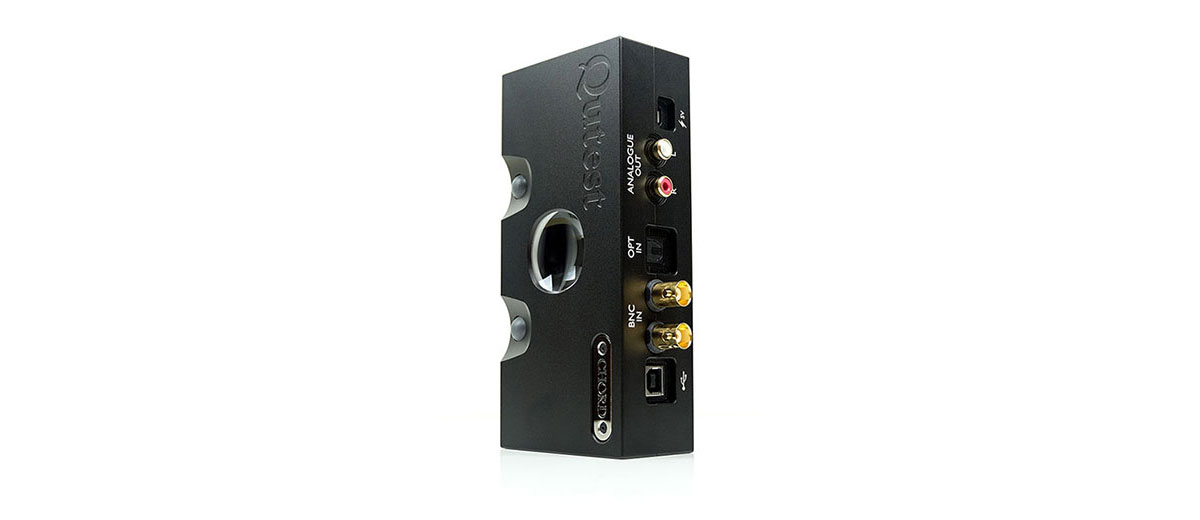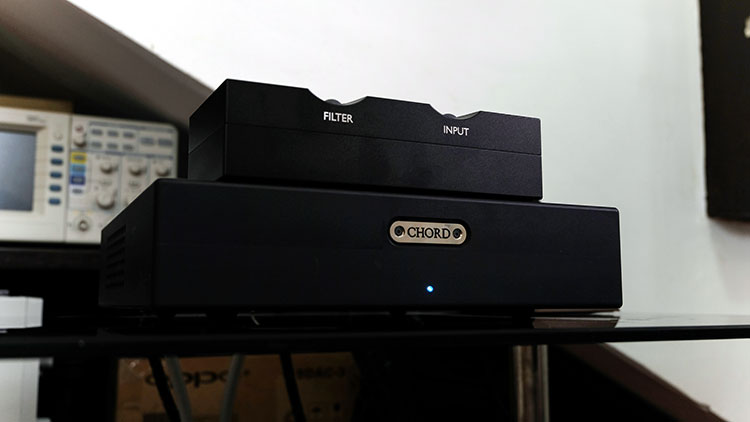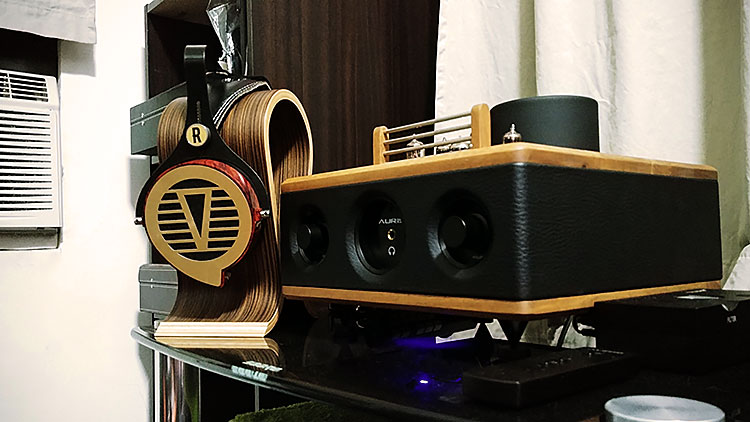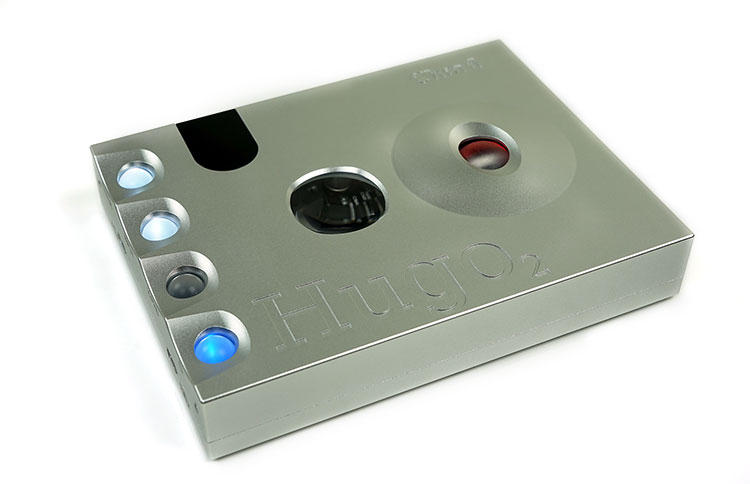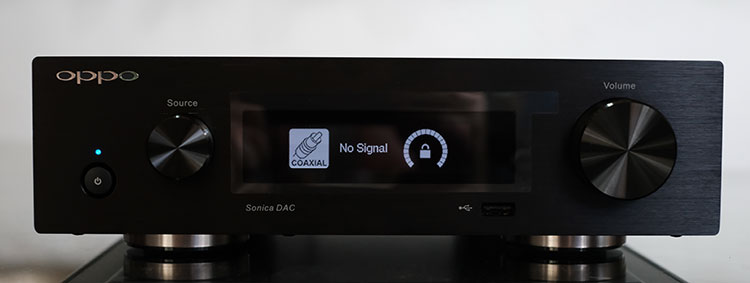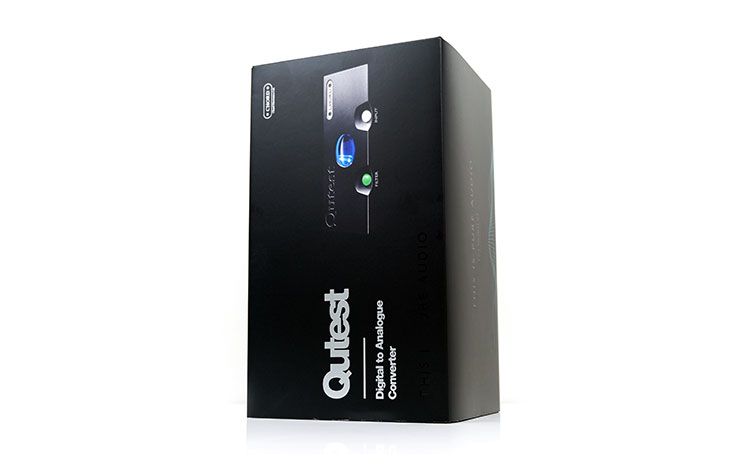Sound Impressions
Summary
In a word or a phrase? Fabulously detailed sounding. But then if you are a Hugo 2 owner this would come as no surprise since this is one of the key traits its DAC section is known for. Over the course of the last 2 months, it has become my ‘go-to’ desktop DAC. It sounds brilliant with just about any desktop amp I have paired it with thus far.
I would not classify the Qutest as dead neutral though. There are some subtle accents on the low-end body and treble presence that mark it as being slightly different from the Hugo 2 also. If anything, compared to the Hugo 2, the Qutest has a bit more treble focus and energy and a slightly more neutral timbre.
Vs The Sabre Sound
Compared to some competing Sabre DAC desktop units that I would definitely class as neutral or bright the Qutest is a little less on the cool side, more natural in tone, and not quite as strident the further up you go in the frequency spectrum. It is subtle at times and the choice of the amplifier may affect how much you hear those nuanced qualitative differences.
We used an Auris HA-2SE and Xi Audio’s Formula S with Hifiman Ananda for the majority of our testing. Both amps are very nicely balanced and the fact one was a tube and the other solid-state was neither here nor there.
With both amps, we felt the Qutest offered a little more low-end body and lower-mids warmth than competing pairings such as the NuPrime DAC-10. We also heard a more complex and open-sounding midrange with better instrumental separation and layering.
Timbre
The timbre also sounded a bit more natural to my ear when comparing the likes of the DAC-10 and the Oppo Sonica ES9038PRO-infused DAC desktop. Both of the delta-sigma desktop units sound very detailed. In particular, the Oppo gives the Qutest a run for its money in terms of instrumental separation and outright staging width.
However, it is that better body on the low-end of the Qutest that makes all the difference. There is a certain warmth or more liquid sound that just sounds spot-on in terms of timbral accuracy compared to the Oppo and DAC-10.
These two can sound a lot drier, perhaps even harder in leading notes with their treble overtones. Certainly, for the DAC-10’s older ES9018 chipset, it is sharper and more clinical sounding.
Synergy
Filter Preferences
Initially, I would say the Neutral Incisive filter for the maximum amount of detail over the complete frequency spectrum. It is there you hear that little forwardness in the treble presence.
However, over the last month, I have started using the warm filter, especially with the HA-2Se tube amp. The black background it offers is just a brilliant match for the HA-2SE’s very low noise levels. Combine that with a little more warmth and just a shade off the very top end and I have possibly the ideal setting for a long-term listening session.
I tend to use this combo for heavy synth and guitar/percussion work on the likes of Daniel Deluxe, Dan Terminus, and old classics from Metallica such as And Justice For All which is a very dry recording, to begin with.
Should I wish to go back to a more studied listening session I tend to revert to the Neutral Incisive which is very dynamic and resolving with Class A amps such as the Formula S from Xi Audio.
Amp Synergy
The beauty of the Qutest is that it works amazingly well in terms of synergy with just about any decent desktop amp you can throw at it. For those that absolutely must have balanced then no, the Qutest cannot offer that compared to the likes of the Oppo Sonica and NuPrime’s CDP-9 and DAC-10.
You can up it to 3V and it will sound peppy for sure but not 8V balanced peppy such as the DAC-10 can offer.
Xi Audio Formula S
However, not all high-end amps offer balanced. In fact, Xi Audio’s $4000 flagship Formula S Class A amp is entirely single-ended. The makers firmly believe single-ended produced a better tone than balanced. I can’t fault them on that claim because the Qutest/Formula S has one of the blackest backgrounds I have heard to date on any system combo.
It also has a beautifully articulate sweet-sounding timbre that I could listen to for days on end. I tend to keep the Qutest on Neutral Incisive because this amp is incredibly resolving and will easily handle the detail the Qutest throws at it without ever sounding harsh or cold.
Auris HA-2SE
The Auris HA-SE you will see me mention many times in this review. This is one super quite low-noise tube amp. The best single-ended tube amp I have heard in ages with regard to clarity without noise. It also sounds super balanced with a nice analog pure sound that never sounds overly slow or warmed-up.
The Qutest takes absolutely nothing away from the HA-2SE ability and the HA-2Se allows the Qutest to really shine. That slight low-end body and natural midrange tone of the Qutest is a perfect match for the HA-2SE’s presentation. Pairing this with a Final D8000 planar or the Hifiman Ananda and using the warm filter is just gloriously easy to listen to.
Select Comparisons
Chord Hugo 2
£1,800.00
Technical
The Hugo 2 costs a bit more than the Qutest but then again, it does pack a bit more in terms of features and it also primarily targets the portable audiophile. That being said, features such as a 5V USB chargeable input do mean it can quite handily function as a high-end DAC in your system.
The Qutest lacks the amplification stage and headphone outputs, it also lacks the Bluetooth receiver. Logically, the Qutest also does not offer the Hugo 2’s X-PHD crossfeed functionality. The Hugo also has independent volume control and can dual as a pre-amp or deliver a fixed line output. Both have the same filters with the same frequency shaping properties.
The Hugo 2 does not, however, have the ability to switch the voltage of the analog line-out so it is fixed at a rather high 3V. The Qutest has much more flexibility in this regard with its 1v, 2v, and 3v options.
Some might also prefer the Qutest input and output socket designs as they are less recessed and further apart than the Hugo 2. The Hugo 2 will not work as well with wide barrel RCA plugs and coaxial cables due to the recessed design and proximity to each other.
The final difference is the BNC coaxial sockets. The Qutest’s BNC connectors make it a logical choice to hook up to Chord M-Scaler in any desktop system. The Hugo 2 does not have a BNC system being limited instead to a single Coaxial input.
Performance
Remarkably, the Hugo 2 and Qutest do not sound exactly alike despite using the same DAC design. Just to temper excitement, these are very nuanced differences. Working both DACs from the same source tracks, same laptop, cables, and analog amp you can detect where each deviates from the other.
Using the Auris HA-2SE, which is where the Qutest has been tethered to for the best part of 2 months, the Qutest sounds a touch cleaner, especially in the upper mids and lower treble.
The Hugo 2 has a slightly wetter low-end with a little more mids body but only very slight. You can hear that body also in the male vocal presence on the Hugo 2 which sounds the tiniest bit richer and further forward.
The Qutest seems to be gunning for total neutrality in instrumental positioning with perhaps just a slight bit more top-end emphasis. Its vocal presence is also more neutral in both position and tone.
You could argue that the Qutest is marginally the more lively of the two as a result with the Hugo 2 slightly the more natural sounding. Other than that resolution and imaging on both DACs are more or less identical.
NuPrime DAC-10
€1,495.00
Technical
The DAC-10 is aging a little but is still a very impressive DAC/Amp and still priced at 1500 EUR which is more than the Qutest. Of course, you are getting a wider range of features in a larger box, not least the balanced and single-ended headphone amp stage and a fully balanced XLR DAC/Amp system.
The DAC itself is delta-sigma with a last-gen ES9018 Sabre chipset which is still quite competitive but not as future-proofed as the Qutest FPGA enabled decoding capability. The DAC-10 tops out at DSD256 and PCM 24BIT/384KHz compared to the Qutest’s 32BIT/768kHz and DSD512 potential.
The noise numbers though are competitive with a THD+N: < 0.0003% which is just marginally behind the Qutest at 0.0002%. The dynamic range for both is also excellent with the Qutest at 117dB on a 300Ω load and the DAC-10 at 115dB on a 600Ω load. In all, a very well-implemented design on an older chipset from NuPrime.
Like the Qutest, you also have a measure of line-out voltage control on the DAC-10. On the unbalanced analog line-out you can switch from 2v to 4v should you require it and on the balanced, you can switch from 4v to 8v which is quite a jump.
The Qutest is a little more nuanced in its 1/2 and 3V settings and only has an unbalanced output to amps. The DAC-10 can also offer pre-amping with its own independent volume and remote control system.
Performance
Both DACs aim for neutrality but the difference between both of them using the same source tracks, PC and amp (HA-2SE) is quite obvious. The DAC-10 has a colder leaner timbre, less instrumental separation, and thus sounds a little flatter and more clinical to my ear.
The detail is excellent, no issues there but it is delivered dry and less natural sounding with that ES9018 lower-treble emphasis that can test you if paired with a bright amp. The Qutest has more low-end body, slightly more liquid in timbre, and a warmer lower-midrange performance. It also has a better treble body as well as a more coherent and less cutting treble sound.
As a result, you are not drawn into the treble peppiness with the Qutest quite like you are with the DAC-10. The Qutest allows you to enjoy or at least perceive to enjoy the full spectrum of instruments both low and high hence that lack of flatness I spoke about originally.
Oppo Sonica
$799
Technical
Too bad Oppo went the way of the dodo recently because their gear has been top-notch this last 10 years. The Sonica DAC got our award last year for the best DAC of 2017. The price tag matched with the ES9038PRO delta-sigma integration was by far the best value to performance ratio yet seen with the latest gen Sabre TOTL DAC chipset.
The Sonica is set up a little more like the DAC-10 than the Qutest but without the amp. It will operate as a pre-amp so you can vary between variable and fixed line-out signals to your amp of choice. It does both balanced and unbalanced analog outputs and accepts USB, Coaxial, and optical inputs though no BNC.
The decoding is on par with the Qutest with a capability of up to DSD512 and 32BIT/768 kHz PCM. Its noise (THD+N) numbers are marginally less competitive at 115dB compared to the Qutest at 117dB. The output voltage parameters of the Sonica are fixed for a line-out at 2V unbalanced and 4V balanced whereas the Qutest can be adjusted between those 3 settings.
A big difference though is the Bluetooth and wireless options inside the Sonica as well as the Android app integration for remote control. You can stream Spotify and TIDAL via Sonica. The Qutest remains a wholly wired traditional solution.
Performance
Both Sonica and Qutest are aiming for that same relatively neutral and detailed ground but they do have some differences in their presentations.
The first is the general timbre of each. The Sonica is a touch brighter to my ear which seeps into the instrumental timbre a bit more than the Qutest. As a result, the Qutest has the more accurate sound, slightly less digital in comparison, and perhaps a little wetter or smoother.
The Sonica will come across as the livelier of the two because of the slightly greater treble emphasis so you might be drawn a little more to high-pitched synth runs, cymbal crashes and guitar plucks with its clean attack and short decay. The Qutest will sound the smoother of the two, with a more natural-sounding treble but still fairly clean overall and very even sounding in terms of its harmonic balance.
The Qutest also has a bit more bass to the lower-mids body than the Sonica. The Sonica is a little cooler of the two and slightly leaner in the mids. I tend to be drawn more to midrange dynamics and vocals with the Qutest compared to the Sonica’s lively top-end.
One interesting thing with soundstage is the width and separation you perceive with Sonica’s presentation. Perhaps due to its lively treble presence but it sounded just that bit wider and taller. The Qutest just pulled it back ever so slightly in favor of something I felt was more natural to my ear but not quite as expansive sounding.
Our Verdict
Gosh, what is there not to like about the Qutest as a pure DAC? Whilst not a total carbon copy of the Hugo 2’s DAC signature it is still resolutely detailed and fantastically natural sounding with just about any amp I can throw at it.
Sure, it does not have all the bells and whistles of desktop DACs such as the Oppo Sonica or NuPrime’s DAC-10H. If you want something balanced with huge dollops of voltage then these two-component units will give you that and then some.
If you want wireless and streaming with your DAC then the Oppo is one of the best-priced choices on the market still to this day in my opinion.
However, on pure sound quality alone it is the best DAC I have heard to date this year. I guess I should not be surprised at that given my thoughts last year on the Hugo 2’s fantastic decoding capability.
Chord Electronics Qutest Specifications
- Chipset: Chord Electronics custom coded Xilinx Artix 7 (XC7A15T) FPGA
- Tap-length: 49,152
- Pulse array: 10 element pulse array design
- Frequency response: 20Hz – 20kHz +/- 0.2dB
- Output stage: Class A
- THD: <0.0001% 1kHz 3v RMS 300Ω
- THD and noise at 3v RMS: 117dB at 1kHz 300ohms ‘A’ wighted (reference 2.5v)
- Noise 2.6 uV ‘A’ weighted: No measurable noise floor modulation
- Channel separation: 138dB at 1kHz 300Ω
- Weight: 770g
- Dimensions: 41mm (H) x 160mm (W) x 72mm (D)
- Boxed Weight: 1500g




